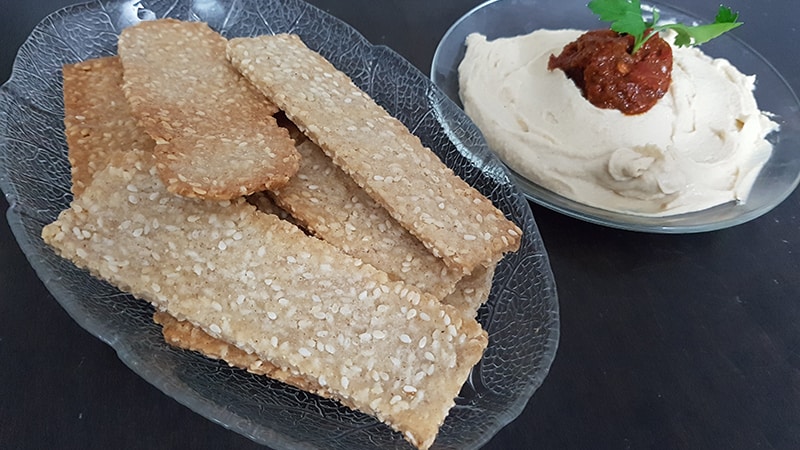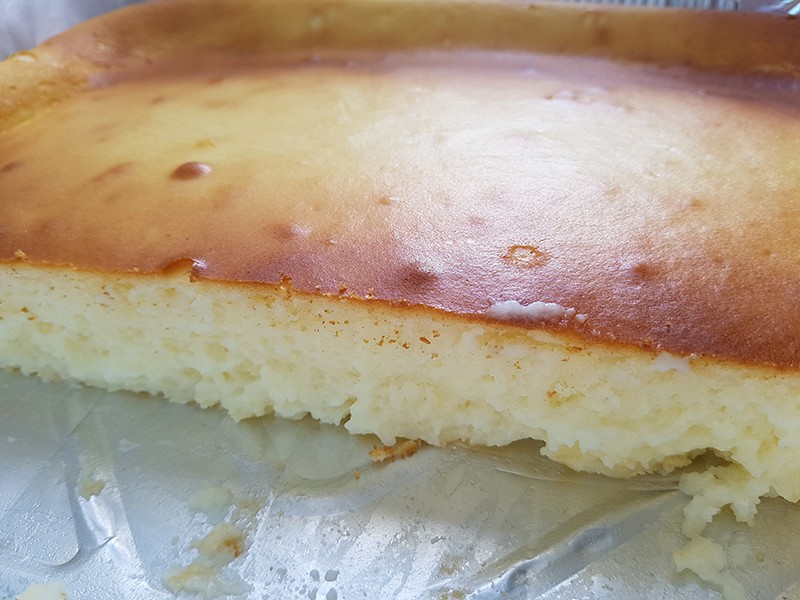DONE! Is a PhD visitor considered as a visiting scholar? In example: Use xdd command-line based tool with tr and sed to print the content after EOI Marker. Optional: To remove the zip file from the list of folders on the left, click Eject . Therefore you may try to check for any extra content after EOI marker. The text can be hidden by making it nearly invisible (turning down it's opacity to below 5%) or using certain colors and filters on it. One is to enable logging with "/log: [path to .txt]" and the other is to start the script after a delay using "/DELAY: [xx seconds]". If wikiHow has helped you, please consider a small contribution to support us in helping more readers like you. 11. The original image with hidden message which started the Cicada 3301, How to find hidden files inside image files (Jpg/Gif/Png) [closed], Finding hidden files (video files) within an image [closed], How Intuit democratizes AI development across teams through reusability. You could also reuse its database of file signatures. Type "copy /b IMAGEFILE.jpg+ZIPFILE.zip IMAGEFILE.jpg". Doubling the cube, field extensions and minimal polynoms, How to tell which packages are held back due to phased updates. From there they can choose to compare the watermarked image to your signature. Does a summoned creature play immediately after being summoned by a ready action? Desktop, then enter a name for it in the box below e.g. Press Enter. Steganography brute-force utility to uncover hidden data inside files. To open an individual file, double-click it. Once you fetch it, delete that line of code. The zip file you want to hide in your image is called YourMenu.zip. Step 2: Move all files you want to hide inside the folder "sk". Press and release the M key. Now you can enter in whatever data you want here and save the file: When you look at the file, it will still be the exact same size as before: You can even open up the file by double-clicking on it, and add whatever data you want to make the file look normal: You can use the command line again to add a second hidden compartment with a different name: You can add whatever other information to this file that youd like: None of these hidden files will affect the other, or change the main file. Click to select an image type (for example, Fabrikam Custom Image 1 ), and then click OK. In order to use this feature, youll have to open a command prompt and use the following syntax: You can use anything after the colon as a secret word, the key is that there cant be any spaces between the first filename and the colon. Does Counterspell prevent from any further spells being cast on a given turn? Soft, Hard, and Mixed Resets Explained, How to Set Variables In Your GitLab CI Pipelines, How to Send a Message to Slack From a Bash Script, The New Outlook Is Opening Up to More People, Windows 11 Feature Updates Are Speeding Up, E-Win Champion Fabric Gaming Chair Review, Amazon Echo Dot With Clock (5th-gen) Review, Grelife 24in Oscillating Space Heater Review: Comfort and Functionality Combined, VCK Dual Filter Air Purifier Review: Affordable and Practical for Home or Office, LatticeWork Amber X Personal Cloud Storage Review: Backups Made Easy, Neat Bumblebee II Review: It's Good, It's Affordable, and It's Usually On Sale, How to Hide Data in a Secret Text File Compartment, Stupid Geek Tricks: Tile or Cascade Multiple Windows in Windows 7, 20 of the Best Stupid Geek Tricks to Impress Your Friends. OpenStego will state it's processing the file, then display a message saying that the message has been embedded. Right-click on the taskbar again. How to use this solution: 1: create the batch file you want to run (ie at C:\apps\mybatch.bat).2: create the invisible.vbs script (ie at C:\apps\invisible.vbs).3: create a new shortcut by right clicking on the background (empty space) of the folder where you want to save the shortcut, mouse over New in the context menu, click Shortcut.For the "Location of the item" enter wscript.exe "C:\apps . Jack Lloyd is a Technology Writer and Editor for wikiHow. Most of the entries in the NAME column of the output from lsof +D /tmp do not begin with /tmp. The nature of simulating nature: A Q&A with IBM Quantum researcher Dr. Jamie We've added a "Necessary cookies only" option to the cookie consent popup. Click the button besides Message File and select the file you wish to hide. They are intrinsically slower and more complicated than using the main config. Go to the image file you used, right-click it, and click. If content is hidden behind a "read more" link to make the content visible on the page, then that's okay. Redoing the align environment with a specific formatting. This isnt a completely secure way to hide data as well illustrate below, but its a fun trick to know about in a pinch. To add a new location, click Add a Place. However, I'm looking for ways to find if there is a completely separate file hidden inside the image. The best answers are voted up and rise to the top, Not the answer you're looking for? Images > Disable images > All Images. Example image: The original image with hidden message which started the Cicada 3301. See this image: Now, your command prompt is able to locate D: drive. that flower.jpg. How can I do this? Although the text is undiscernable . Open the Settings app, select Apps & notifications, and tap See all apps to disable an app. Staging Ground Beta 1 Recap, and Reviewers needed for Beta 2. http://en.wikipedia.org/wiki/List_of_file_signatures On Windows: navigate to the PDF file -> right click on it -> select Open with -> click Choose another app -> Choose Adobe Acrobat Reader DC or Adobe Acrobat DC -> check Always use this app to open .pdf files -> click on the OK button. When they open a picture on a device, few people ever have reason to look beyond the visual presentation displayed to what lies hidden inside the .jpg, .png, .bmp or other image file format. If you didnt specify .txt on the end, Notepad will automatically add it, and ask if you want to create a new file, even if SomeFile.txt already existed, because SecretSquirrel!.txt doesnt already exist. camera1. Today I saw a way to concatenate a zip file along with an image. 114. E.g. Open terminal from your image file location and run this . This is a great way to hide anything from a. That way, your data totally stays safe from prying eyes you want to hide it from. Connect and share knowledge within a single location that is structured and easy to search. Let's have another look at the Fill & Stroke menu. You can't by magic, you could guess how the files were hidden in a given instance. Can I examine JPEG bit-by-bit to see if it has a RAR in it? In the first instance, make sure it's bigger than the 'message' file. Step 2: Now Select a File to Hide Behind the Image and Make It in .RAR Format. These pop-ups can obscure the content for a viewer. You may do this anywhere instead of desktop if you have some basic understanding of command line. Move your cursor to the bottom of the screen to re-display the taskbar. The New Outlook for Windows Is Opening Up to More People, Nuhearas Earbuds Deliver Personalized Audio for $200 Off, The Quest 2 and Quest Pro VR Headsets Are Dropping in Price, 2023 LifeSavvy Media. Then, a Request access page will open automatically. of ways to do that that you wont be able to detect easily. RAR files start with the string. Step 3: Open command prompt and drill down to the directory of folder that holds the zip file . for rar files it's 52 61 72 21 1A 07 00 Hit the large camouflage button to start hiding your files. {"smallUrl":"https:\/\/www.wikihow.com\/images\/thumb\/4\/49\/Hide-a-File-in-an-Image-File-Step-1-Version-4.jpg\/v4-460px-Hide-a-File-in-an-Image-File-Step-1-Version-4.jpg","bigUrl":"\/images\/thumb\/4\/49\/Hide-a-File-in-an-Image-File-Step-1-Version-4.jpg\/aid3670132-v4-728px-Hide-a-File-in-an-Image-File-Step-1-Version-4.jpg","smallWidth":460,"smallHeight":345,"bigWidth":728,"bigHeight":546,"licensing":"
License: Fair Use<\/a> (screenshot) License: Fair Use<\/a> (screenshot) License: Fair Use<\/a> (screenshot) License: Fair Use<\/a> (screenshot) License: Fair Use<\/a> (screenshot) License: Fair Use<\/a> (screenshot) License: Fair Use<\/a> (screenshot) License: Fair Use<\/a> (screenshot) License: Fair Use<\/a> (screenshot) License: Fair Use<\/a> (screenshot) License: Fair Use<\/a> (screenshot) I edited this screenshot of a Windows icon.\n<\/p> License: Public Domain<\/a> I edited this screenshot of a Windows icon.\n<\/p> License: Fair Use<\/a> License: Fair Use<\/a> (screenshot) License: Fair Use<\/a> (screenshot) License: Fair Use<\/a> (screenshot) אתר המתכונים הבייתים © 2016 גרפוד מתכונים ביתיים. כל הזכויות שמורות לבעלים, המעצב ובונה האתר: courier post obituaries new jersey.
\n<\/p><\/div>"}, {"smallUrl":"https:\/\/www.wikihow.com\/images\/thumb\/9\/9e\/Hide-a-File-in-an-Image-File-Step-2-Version-4.jpg\/v4-460px-Hide-a-File-in-an-Image-File-Step-2-Version-4.jpg","bigUrl":"\/images\/thumb\/9\/9e\/Hide-a-File-in-an-Image-File-Step-2-Version-4.jpg\/aid3670132-v4-728px-Hide-a-File-in-an-Image-File-Step-2-Version-4.jpg","smallWidth":460,"smallHeight":345,"bigWidth":728,"bigHeight":546,"licensing":"
\n<\/p><\/div>"}, {"smallUrl":"https:\/\/www.wikihow.com\/images\/thumb\/9\/9c\/Hide-a-File-in-an-Image-File-Step-3-Version-4.jpg\/v4-460px-Hide-a-File-in-an-Image-File-Step-3-Version-4.jpg","bigUrl":"\/images\/thumb\/9\/9c\/Hide-a-File-in-an-Image-File-Step-3-Version-4.jpg\/aid3670132-v4-728px-Hide-a-File-in-an-Image-File-Step-3-Version-4.jpg","smallWidth":460,"smallHeight":345,"bigWidth":728,"bigHeight":546,"licensing":"
\n<\/p><\/div>"}, {"smallUrl":"https:\/\/www.wikihow.com\/images\/thumb\/a\/ac\/Hide-a-File-in-an-Image-File-Step-4-Version-4.jpg\/v4-460px-Hide-a-File-in-an-Image-File-Step-4-Version-4.jpg","bigUrl":"\/images\/thumb\/a\/ac\/Hide-a-File-in-an-Image-File-Step-4-Version-4.jpg\/aid3670132-v4-728px-Hide-a-File-in-an-Image-File-Step-4-Version-4.jpg","smallWidth":460,"smallHeight":345,"bigWidth":728,"bigHeight":546,"licensing":"
\n<\/p><\/div>"}, {"smallUrl":"https:\/\/www.wikihow.com\/images\/thumb\/2\/28\/Hide-a-File-in-an-Image-File-Step-5-Version-4.jpg\/v4-460px-Hide-a-File-in-an-Image-File-Step-5-Version-4.jpg","bigUrl":"\/images\/thumb\/2\/28\/Hide-a-File-in-an-Image-File-Step-5-Version-4.jpg\/aid3670132-v4-728px-Hide-a-File-in-an-Image-File-Step-5-Version-4.jpg","smallWidth":460,"smallHeight":345,"bigWidth":728,"bigHeight":546,"licensing":"
\n<\/p><\/div>"}, {"smallUrl":"https:\/\/www.wikihow.com\/images\/thumb\/0\/0c\/Hide-a-File-in-an-Image-File-Step-6-Version-4.jpg\/v4-460px-Hide-a-File-in-an-Image-File-Step-6-Version-4.jpg","bigUrl":"\/images\/thumb\/0\/0c\/Hide-a-File-in-an-Image-File-Step-6-Version-4.jpg\/aid3670132-v4-728px-Hide-a-File-in-an-Image-File-Step-6-Version-4.jpg","smallWidth":460,"smallHeight":345,"bigWidth":728,"bigHeight":546,"licensing":"
\n<\/p><\/div>"}, {"smallUrl":"https:\/\/www.wikihow.com\/images\/thumb\/e\/e0\/Hide-a-File-in-an-Image-File-Step-7-Version-4.jpg\/v4-460px-Hide-a-File-in-an-Image-File-Step-7-Version-4.jpg","bigUrl":"\/images\/thumb\/e\/e0\/Hide-a-File-in-an-Image-File-Step-7-Version-4.jpg\/aid3670132-v4-728px-Hide-a-File-in-an-Image-File-Step-7-Version-4.jpg","smallWidth":460,"smallHeight":345,"bigWidth":728,"bigHeight":546,"licensing":"
\n<\/p><\/div>"}, {"smallUrl":"https:\/\/www.wikihow.com\/images\/thumb\/5\/52\/Hide-a-File-in-an-Image-File-Step-8-Version-4.jpg\/v4-460px-Hide-a-File-in-an-Image-File-Step-8-Version-4.jpg","bigUrl":"\/images\/thumb\/5\/52\/Hide-a-File-in-an-Image-File-Step-8-Version-4.jpg\/aid3670132-v4-728px-Hide-a-File-in-an-Image-File-Step-8-Version-4.jpg","smallWidth":460,"smallHeight":345,"bigWidth":728,"bigHeight":546,"licensing":"
\n<\/p><\/div>"}, {"smallUrl":"https:\/\/www.wikihow.com\/images\/thumb\/1\/1a\/Hide-a-File-in-an-Image-File-Step-9-Version-3.jpg\/v4-460px-Hide-a-File-in-an-Image-File-Step-9-Version-3.jpg","bigUrl":"\/images\/thumb\/1\/1a\/Hide-a-File-in-an-Image-File-Step-9-Version-3.jpg\/aid3670132-v4-728px-Hide-a-File-in-an-Image-File-Step-9-Version-3.jpg","smallWidth":460,"smallHeight":345,"bigWidth":728,"bigHeight":546,"licensing":"
\n<\/p><\/div>"}, {"smallUrl":"https:\/\/www.wikihow.com\/images\/thumb\/0\/00\/Hide-a-File-in-an-Image-File-Step-10-Version-4.jpg\/v4-460px-Hide-a-File-in-an-Image-File-Step-10-Version-4.jpg","bigUrl":"\/images\/thumb\/0\/00\/Hide-a-File-in-an-Image-File-Step-10-Version-4.jpg\/aid3670132-v4-728px-Hide-a-File-in-an-Image-File-Step-10-Version-4.jpg","smallWidth":460,"smallHeight":345,"bigWidth":728,"bigHeight":546,"licensing":"
\n<\/p><\/div>"}, {"smallUrl":"https:\/\/www.wikihow.com\/images\/thumb\/2\/2e\/Hide-a-File-in-an-Image-File-Step-11.jpg\/v4-460px-Hide-a-File-in-an-Image-File-Step-11.jpg","bigUrl":"\/images\/thumb\/2\/2e\/Hide-a-File-in-an-Image-File-Step-11.jpg\/aid3670132-v4-728px-Hide-a-File-in-an-Image-File-Step-11.jpg","smallWidth":460,"smallHeight":345,"bigWidth":728,"bigHeight":546,"licensing":"
\n<\/p><\/div>"}, {"smallUrl":"https:\/\/www.wikihow.com\/images\/0\/07\/Windowsstart.png","bigUrl":"\/images\/thumb\/0\/07\/Windowsstart.png\/30px-Windowsstart.png","smallWidth":460,"smallHeight":460,"bigWidth":30,"bigHeight":30,"licensing":"
\n<\/p><\/div>"}, {"smallUrl":"https:\/\/www.wikihow.com\/images\/6\/66\/Windowscmd1.png","bigUrl":"\/images\/thumb\/6\/66\/Windowscmd1.png\/36px-Windowscmd1.png","smallWidth":460,"smallHeight":383,"bigWidth":36,"bigHeight":30,"licensing":"
\n<\/p><\/div>"}, {"smallUrl":"https:\/\/www.wikihow.com\/images\/thumb\/d\/d4\/Hide-a-File-in-an-Image-File-Step-12.jpg\/v4-460px-Hide-a-File-in-an-Image-File-Step-12.jpg","bigUrl":"\/images\/thumb\/d\/d4\/Hide-a-File-in-an-Image-File-Step-12.jpg\/aid3670132-v4-728px-Hide-a-File-in-an-Image-File-Step-12.jpg","smallWidth":460,"smallHeight":345,"bigWidth":728,"bigHeight":546,"licensing":"
\n<\/p><\/div>"}, {"smallUrl":"https:\/\/www.wikihow.com\/images\/thumb\/4\/49\/Hide-a-File-in-an-Image-File-Step-13.jpg\/v4-460px-Hide-a-File-in-an-Image-File-Step-13.jpg","bigUrl":"\/images\/thumb\/4\/49\/Hide-a-File-in-an-Image-File-Step-13.jpg\/aid3670132-v4-728px-Hide-a-File-in-an-Image-File-Step-13.jpg","smallWidth":460,"smallHeight":345,"bigWidth":728,"bigHeight":546,"licensing":"
\n<\/p><\/div>"}, {"smallUrl":"https:\/\/www.wikihow.com\/images\/thumb\/5\/58\/Hide-a-File-in-an-Image-File-Step-14.jpg\/v4-460px-Hide-a-File-in-an-Image-File-Step-14.jpg","bigUrl":"\/images\/thumb\/5\/58\/Hide-a-File-in-an-Image-File-Step-14.jpg\/aid3670132-v4-728px-Hide-a-File-in-an-Image-File-Step-14.jpg","smallWidth":460,"smallHeight":345,"bigWidth":728,"bigHeight":546,"licensing":"
\n<\/p><\/div>"}, {"smallUrl":"https:\/\/www.wikihow.com\/images\/thumb\/8\/83\/Hide-a-File-in-an-Image-File-Step-15.jpg\/v4-460px-Hide-a-File-in-an-Image-File-Step-15.jpg","bigUrl":"\/images\/thumb\/8\/83\/Hide-a-File-in-an-Image-File-Step-15.jpg\/aid3670132-v4-728px-Hide-a-File-in-an-Image-File-Step-15.jpg","smallWidth":460,"smallHeight":345,"bigWidth":728,"bigHeight":546,"licensing":"how to open file hidden behind image
תהיו מעוניינים ב...



